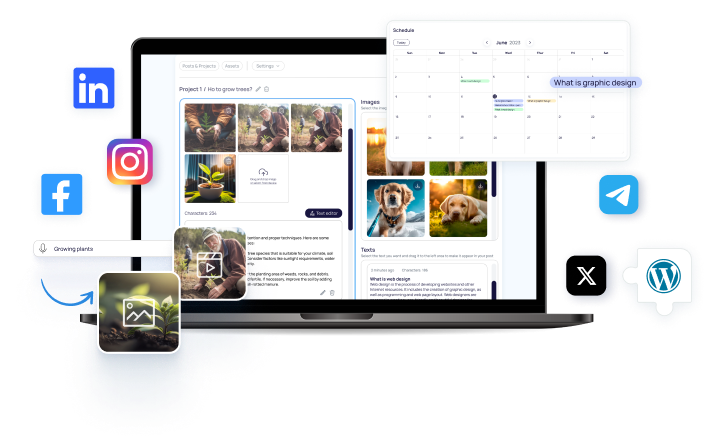Klarna's Workforce Reduction and AI Integration: Future Plans

Klarna's CEO, Sebastian Siemiatkowski, aims to reduce the company's workforce to 2, 000 employees in the near future, down from a peak of 5, 000. Siemiatkowski expressed that they can achieve more with fewer employees and has a general target of 2, 000 without a specific deadline. Klarna has been a strong advocate for the implementation of AI, especially since the emergence of large language models, as it has the potential to significantly reduce the number of employees required. The company's AI chatbot, developed in collaboration with OpenAI, has been able to handle the workload of 700 customer service agents. While Klarna still outsources some customer service tasks, it also intends to utilize AI for certain marketing roles. The company has started to witness the benefits of AI reflected in its financial performance. In the first half of 2024, Klarna reported a revenue increase of 27% compared to the same period in 2023. Additionally, revenue per employee has grown from SEK 4 million ($393, 000) to SEK 7 million ($689, 000) over the past year. It's worth noting that while the impact of AI on the company's growth might be overstated, Klarna has also benefited from declining interest rates this year.
Many tech companies have experienced increased revenue per employee by reducing their workforce after realizing that they had over-hired during the COVID-19 surge. Klarna's reduction in headcount is already underway, with the number of employees decreasing from 5, 000 to 3, 800. Last year, Siemiatkowski announced a hiring freeze due to AI advancements within the company, enabling Klarna to grow more rapidly without rapidly expanding its workforce. Klarna's long-term plan involves natural attrition, where employees leave the company due to better job opportunities or personal preferences, which is common in the tech sector. Instead of conducting layoffs, Klarna does not intend to fill vacant positions when employees depart. The company does not utilize traditional tactics, such as restricting promotions, salary raises, or implementing performance improvement plans, to encourage employee departures. It remains uncertain how employees will respond to the message that their positions may not always be available, but it is clear that there is an underlying motive tied to Klarna's highly anticipated initial public offering (IPO). Siemiatkowski has not publicly commented on IPO plans, likely waiting for the right timing following the company's market value decline from $40 billion to $6. 7 billion during a broader market downturn. Many current Klarna employees may not have the opportunity to witness the company's IPO firsthand.
Brief news summary
Klarna, led by CEO Sebastian Siemiatkowski, plans to decrease its workforce to approximately 2,000 employees from its peak of 5,000, utilizing artificial intelligence (AI) to automate tasks. This strategy has yielded positive results, with revenue per employee rising and a 27% increase in revenues during the first half of 2024. While AI has contributed to Klarna's growth, external factors such as lower interest rates and the impact of the COVID-19 pandemic should also be considered. Klarna's headcount reduction is already in progress, with employee attrition playing a significant role in achieving their long-term goal. The company aims to avoid layoffs or traditional tactics, instead choosing not to fill vacancies when employees leave. It is uncertain how employees will react to these changes, but Siemiatkowski's public statements seem influenced by Klarna's anticipated IPO.
AI-powered Lead Generation in Social Media
and Search Engines
Let AI take control and automatically generate leads for you!

I'm your Content Manager, ready to handle your first test assignment
Learn how AI can help your business.
Let’s talk!

JPMorgan Explores Blockchain Uses in Portfolio Ma…
JPMorgan’s digital asset division, Onyx, has launched a pioneering initiative to advance blockchain technology by focusing on enhancing interoperability in portfolio management.

Google Rolls Out On-Device AI Protections to Dete…
On Thursday, Google announced the launch of new artificial intelligence (AI)-powered countermeasures aimed at combating scams across Chrome, Search, and Android platforms.

WNC (OurNeighbor) Empowers Global Resort Experien…
May 8, 2025, 12:48 PM EDT | Source: LBank Road Town, British Virgin Islands—LBank Exchange, a leading global digital asset trading platform, announces the upcoming listing of WNC (OurNeighbor) on May 9, 2025

WATCH: OpenAI co-founder Sam Altman testifies on …
WASHINGTON (AP) — OpenAI CEO Sam Altman, along with executives from Microsoft and semiconductor maker Advanced Micro Devices (AMD), testified before Congress about the vast opportunities, risks, and needs facing the artificial intelligence (AI) industry—an area both lawmakers and technologists see as capable of fundamentally transforming global business, culture, and geopolitics.

Privacy and Blockchain: Enhancing Security and Co…
Privacy and blockchain technology intersect in intriguing ways, mainly through advanced cryptographic techniques aimed at enhancing security and confidentiality for users.

Trump to change controversial Biden-era restricti…
President Donald Trump plans to rescind Biden-era restrictions designed to prevent advanced technology from reaching foreign adversaries—measures criticized by major tech companies.

Blockchain Government Presents a $791.5 Billion M…
The global Blockchain Government market is rapidly expanding, valued at US$22.5 billion in 2024 and projected to soar to US$791.5 billion by 2030, with a robust Compound Annual Growth Rate (CAGR) of 81% from 2024 to 2030.

 Auto-Filling SEO Website as a Gift
Auto-Filling SEO Website as a Gift








 Auto-Filling SEO Website as a Gift
Auto-Filling SEO Website as a Gift

